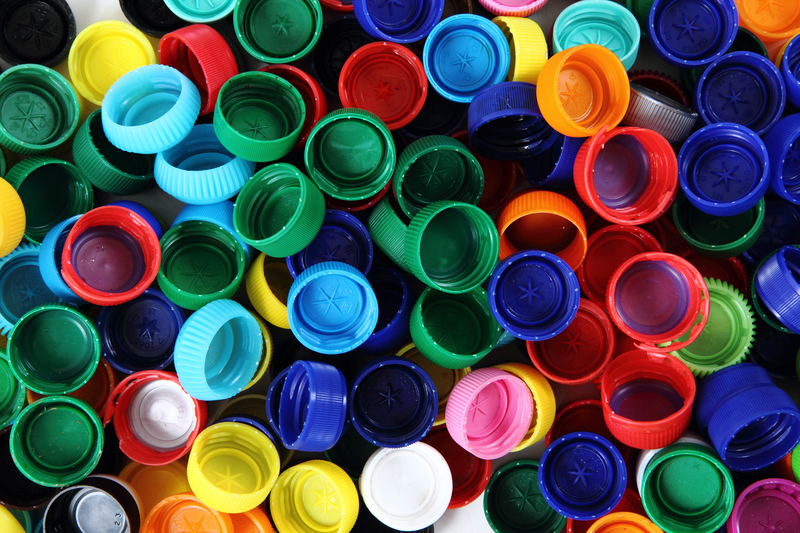Innovative Approaches to Clutter Removal and Hoarder Clean Up
Clutter accumulation and compulsive hoarding present significant challenges for millions worldwide. From disrupting everyday routines to impacting mental and physical health, clutter and severe hoarding behavior demand more than just a superficial clean-up. The good news is that innovative approaches to clutter removal and hoarder clean up continue to evolve, blending psychology, technology, and compassionate environmental practices. This comprehensive guide explores the latest strategies and solutions that deliver effective, sustainable results for individuals, families, and communities struggling with chronic disorganization and hoarding tendencies.

Understanding the Roots of Clutter and Hoarding
Before diving into the cutting-edge methods for clutter removal and hoarders cleaning, it's important to understand the underlying causes of clutter and hoarding. Hoarding disorder is a recognized mental health condition, characterized by the persistent difficulty discarding or parting with possessions, regardless of their actual value. Clutter accumulation can stem from a variety of sources including emotional attachment, trauma, mental health conditions, or simple lifestyle overwhelm.
- Psychological Root Causes: Anxiety, depression, obsessive-compulsive disorder (OCD), and other mental health issues frequently contribute to hoarding behavior and clutter build-up.
- Environmental Factors: Life transitions, loss, or lack of proper storage solutions can expedite clutter proliferation.
- Societal Pressures: Consumerism and advertising can lead to unnecessary purchases and goods accumulation.
Traditional cleaning services and do-it-yourself cleaning methods often fail to address these root causes. Instead, innovative clutter removal services and compassionate hoarding clean-up employ a holistic strategy, combining practical, emotional, and psychological support.
Rethinking Hoarder House Clean Up: Modern Strategies That Work
1. Professional Intervention with Trauma-Informed Training
Unlike standard cleaning, hoarder clean up professionals now receive specialized training in trauma and crisis intervention. These teams approach each clutter-filled space with empathy and patience, forging trust with clients before any physical cleaning begins.
- Empathetic Communication: Professionals listen to each client's story, enabling personalized clutter cleaning services that respect personal attachments.
- Gradual Progress: Work is scheduled at a pace that reduces anxiety and perceived loss for the individual struggling with hoarding disorder.
This trauma-informed approach is increasingly popular among top hoarding cleanup companies and community organizations, resulting in long-term behavioral change rather than a temporary fix.
2. Digital Cataloging and Inventory Solutions
Cutting-edge technology is transforming clutter management. Digital apps and inventory systems allow individuals and organizers to systematically catalog possessions before removal.
- Photo Documentation: Items are photographed and sorted digitally, providing reassurance and a visual record for owners.
- Inventory Lists: Create categorized lists for easy reference and informed decision-making during the de-cluttering process.
These tools empower hoarder cleaning services to maintain transparency and keep clients engaged throughout each step of the process.
3. Eco-Friendly Clutter Removal for Sustainable Clean Up
New approaches prioritize environmentally responsible hoarder house clean up. Modern clutter removal companies implement innovative waste management practices such as:
- Donation and Reuse: Carefully sorting items for donation to charities, shelters, and recycling centers reduces landfill waste.
- Hazardous Materials Handling: Special protocols dispose of biohazards and other dangerous items safely, protecting both residents and clean-up crews.
- Eco-Friendly Products: Utilizing biodegradable cleaning supplies for deep sanitation after clutter removal.
Adopting a sustainable approach not only benefits the environment but also alleviates guilt or anxiety that clients may feel about discarding possessions.
4. Integrative Behavioral Therapy and Support
Modern solutions for hoarder clean-up recognize the necessity of professional mental health guidance. Behavioral therapy and counseling often accompany the physical cleaning effort to ensure long-term success.
- Cognitive-Behavioral Therapy (CBT): CBT techniques empower individuals to change unhealthy thought patterns related to acquiring and retaining items.
- Support Groups: Both online and in-person peer groups give ongoing encouragement, helping clients maintain clutter-free spaces.
- Aftercare Plans: Structured check-ins and home visits from organizers or mental health experts help prevent relapse.
These integrative approaches are now considered best practices by leading clutter management agencies and therapeutic practitioners alike.
Innovative Tools and Technologies for Clutter Removal
A new era of tools and gadgets have revolutionized the way homes and workspaces can be transformed from chaos to calm. The deployment of technology in clutter clean up not only speeds up the process, it also enhances safety and efficiency.
Smart Storage and Adaptive Organization Solutions
- Modular Storage Units: Stackable, customizable units optimize limited space and promote organizational habits.
- Labeling Systems: QR code and RFID-based labeling tracks belongings, reducing loss and unnecessary accumulation.
- Automated Inventory Management: IoT-enabled apps remind users of unused items, suggesting donation or disposal timelines to sustain an organized environment.
Safety Drones and Hazard Assessment Robots
Particularly in extreme hoarding situations where debris or structural risks may be present, innovative use of drone technology and compact robots allows for remote assessment. These tools:
- Help evaluate safety hazards without endangering human cleaners
- Map out the extent of clutter for better project planning
Virtual Cleaning Coaches and Online Support Apps
Not everyone can access in-person support, especially in remote areas. Virtual decluttering coaches, via video call or smartphone apps, provide step-by-step action plans and motivation, making clutter removal more accessible than ever.
Empowering Individuals for Lasting Change
Ultimately, the most innovative approaches to clutter removal and hoarding clean-up aim to empower the individual--not just to clean, but to heal. Key elements of client empowerment include:
- Education: Workshops, blogs, and social media campaigns teach healthy organizational habits and the psychological dynamics of clutter.
- Personalized Goal Setting: Plans tailored to individual needs and progress help foster intrinsic motivation.
- Celebration of Progress: Documenting and honoring small victories boosts confidence and prevents relapse.
How Communities and Families Can Help with Hoarder Clean-Up
Communities and loved ones play a crucial role in successful clutter removal. Here are some innovative ways families and neighborhoods can support hoarding recovery:
- Community Clean-Up Events: Hosting judgment-free local events with mental health support, free disposal services, and resources encourages willing participation.
- Family Counseling: Trained therapists can help mediate challenging conversations, promoting empathy and cooperation over confrontation.
- Resource Networks: Establishing connections with donation centers, recycling programs, and affordable home improvement services rounds out the ecosystem of support.
For those facing legal or health code issues due to hoarding, some municipalities now offer collaborative task forces that combine fire safety, mental health, and non-profit partnerships to provide holistic, non-punitive help.
Tips for Sustainable Clutter Management and Prevention
Prevention is always better than cure. For those striving to avoid overwhelming mess and the need for future extreme hoarder clean up, the following best practices can make a world of difference:
- Daily Routine: Spend just 10-15 minutes a day clearing surfaces for a consistent, manageable approach.
- 'One In, One Out' Rule: For every new item purchased or brought home, commit to removing one item of similar function or size.
- Quarterly Decluttering: Seasonal checks for unused clothing, appliances, and papers prevents silent accumulation.
- Mindful Purchasing: Before acquiring new possessions, ask: Do I need it? Do I have space for it? Will I use it regularly?
- Use Digital Alternatives: Replace paper files, photos, and memorabilia with digital storage whenever possible.

The Future of Clutter Removal and Hoarder Clean Up: What's Next?
The landscape of hoarder clean-up and clutter remediation is rapidly evolving. Innovations on the horizon include AI-driven organizational assistants, virtual reality systems for exposure therapy, and advanced recycling technologies to make clean-up even more sustainable.
What remains consistent, however, is the need for a compassionate, holistic approach. By focusing on the root causes, leveraging modern technologies, and fostering community connections, the industry is moving towards treatments that promise not just a cleaner home, but a healthier, happier life.
Conclusion: Embracing New Solutions for Clutter and Hoarder Recovery
The difficulties of clutter removal and hoarder clean up are real, but so are the possibilities for innovation and healing. By combining trauma-aware professional services, cutting-edge digital tools, eco-friendly practices, and strong support networks, individuals and communities can reclaim spaces--and lives--once overwhelmed by disorder. Whether you are helping a loved one, working professionally, or seeking your own fresh start, these innovative approaches to clutter and hoarding clean-up offer practical inspiration and hope for a brighter, clutter-free future.
Ready to take the first step? Harness the power of new technology and compassionate support to start your decluttering journey today.